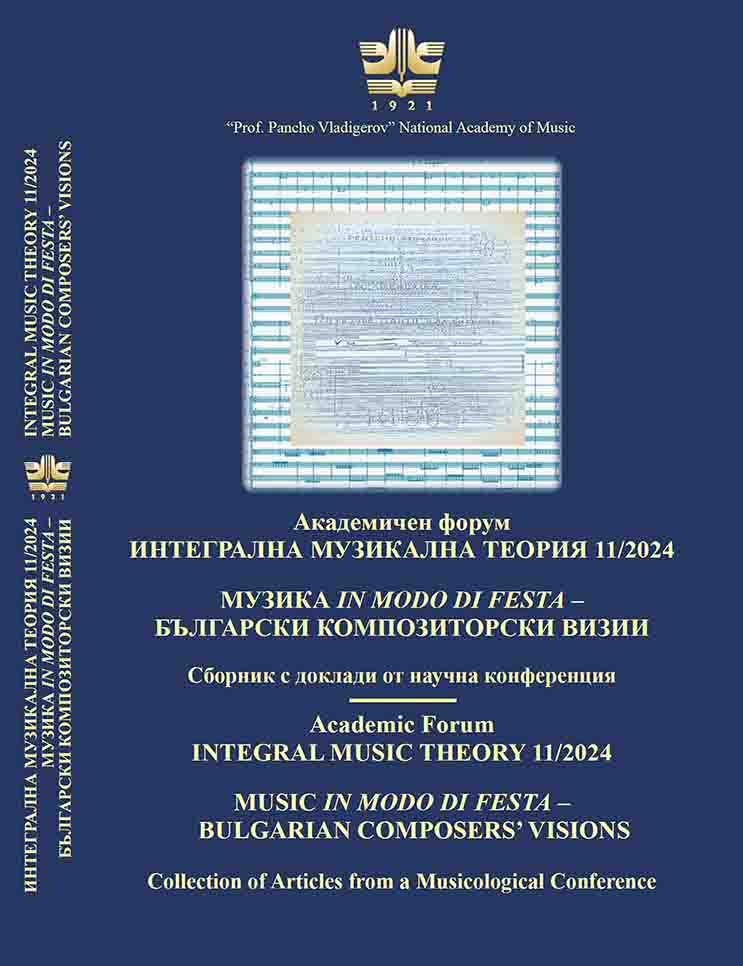Статията Теория и приложение на четвърттонната музика и пътят към дванайсеттоновостта при Константин Илиев
The article Theory and Application of the quarter-tone music and Konstantin Iliev’s path towards the twelve-tone technique
Author(s): Angelina PetrovaSubject(s): Fine Arts / Performing Arts, Music
Published by: Издателство НМА „Проф. Панчо Владигеров”
Keywords: twelve-tone and quarter-tone composition; Alois Hába; Konstantin Iliev; ideological canon of socialist realism; microtonality
Summary/Abstract: In 1949 Konstantin Iliev wrote the article “Theory and Practice of the Quarter-tone Music”, which remains unpublished. He wrote on the text that the article was returned to him by Pipkov and kept the manuscript in his archive. The background of this short theoretical text by Konstantin Iliev is connected with his studies under Alois Hába, a prominent representative of the pre-war musical modernism. In the radically different context of the imposition of the ideological canon of socialist realism in Eastern Europe, a distinctive analogue of the post-war New Music based on the twelve-tone technique emerged. Alois Hába is a bridge that connects Konstantin Iliev to the knowledge and poetics of modernism in the first half of the 20th century. Konstantin Iliev accepts the radicalization of the views on dissonance undertaken by Hába. If Schoenberg speaks of a principle of distance and destructs the tonal significance of the consonance/dissonance relation, Hába argues that the perception of consonance and dissonance is the result of the will of the composer. After 1949 Konstantin Iliev pursued the path of discovering his own twelve-tone composition and that of the aesthetic protest. The ideas of his twelve-tone writing differed from the serialism and modernism of the second half of the 20th century, which was a reflection of his time studying with Alois Hába.
Journal: Academic Forum “Integral Music Theory”
- Issue Year: 11/2024
- Issue No: 1
- Page Range: 113-127
- Page Count: 15
- Language: Bulgarian

